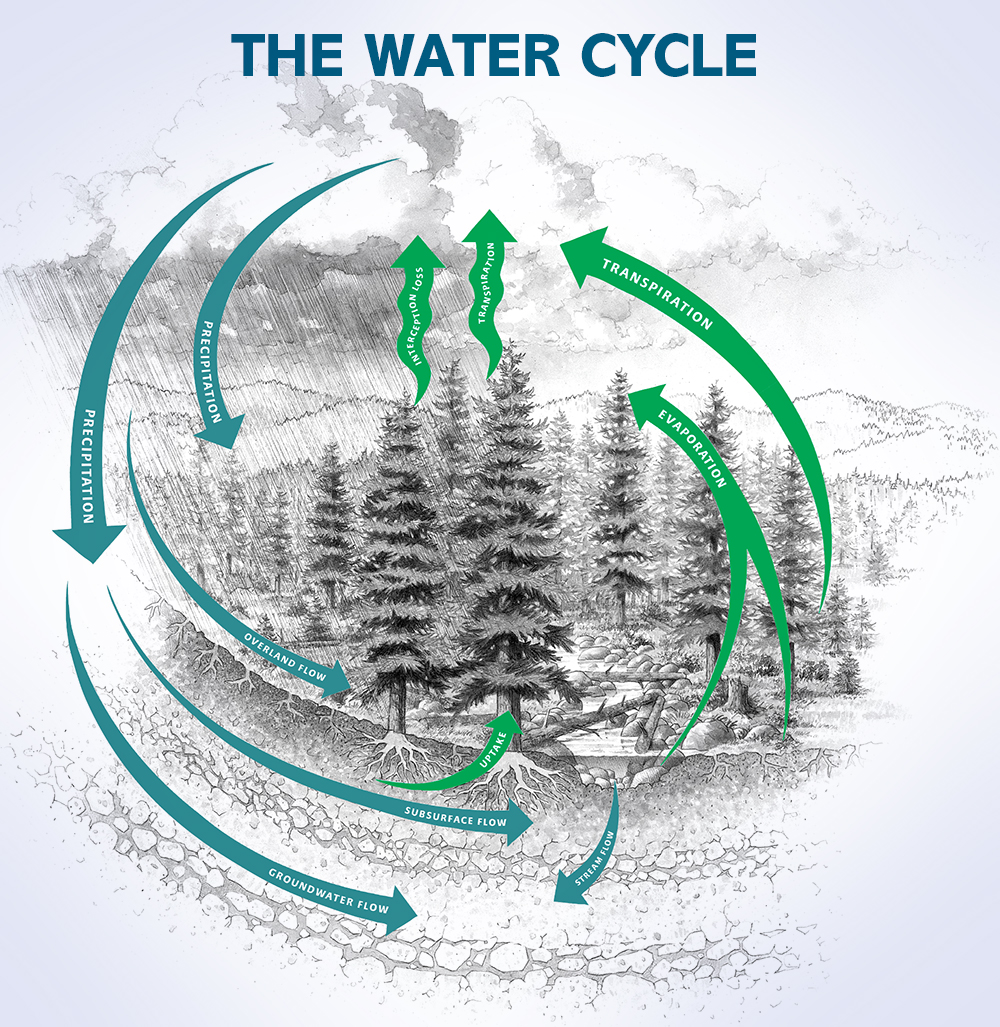
Wood isn’t the only resource provided by our forests. Streams originating in forests supply water for Oregonians to drink, use in their homes and businesses, and irrigate their fields.
Forest soils provide natural filtration that keeps streams clean and water quality high. Most of Oregon’s municipal water systems use water that originates in forests, including areas managed for wood production. The quality of this water is some of the best in the nation.

Nature’s water filter
Watersheds are areas where rain and snow collect and drain through a network of streams into a river or other water body. In forest watersheds, rain and runoff are absorbed by forest soils, which act as a natural filtration system. Over time, the naturally filtered water is released into nearby streams or groundwater aquifers. This cycle results in clean, healthy water that requires minimal chemical treatment.
Forest Fact Break: Water
This 90-second animated video looks at the relationship between water quality and Oregon’s forests. Healthy forest soils act as a giant filter for 75 percent of all municipal water in Oregon. So pour yourself a glass of water; it’s what a healthy Oregon forest tastes like. This video is part of OFRI’s Forest Fact Breaks series, which uses bold animated graphics, sound effects and narration to teach about natural resource topics in a fun, easy-to-understand way.
Protecting forest water quality
Many forest watersheds that supply water to Oregonians include actively managed lands where modern timber harvest and resource protection methods are used to help keep water clean for fish, wildlife and us.
The Oregon Forest Practices Act is a comprehensive set of state laws and rules. To protect fish and the source of much of Oregon's drinking water, OFPA regulates forest practices, and restricts timber harvesting, road building and the use of chemicals near streams and other water bodies.
Oregon Forests and Water
An estimated 2.8 million Oregonians rely on water that comes from forested landscapes. This seven-minute video provides an overview of three critical areas covered in this report: How forest buffers protect streams, how forest roads and stream crossings have evolved, and how contemporary equipment and techniques lessen management impact